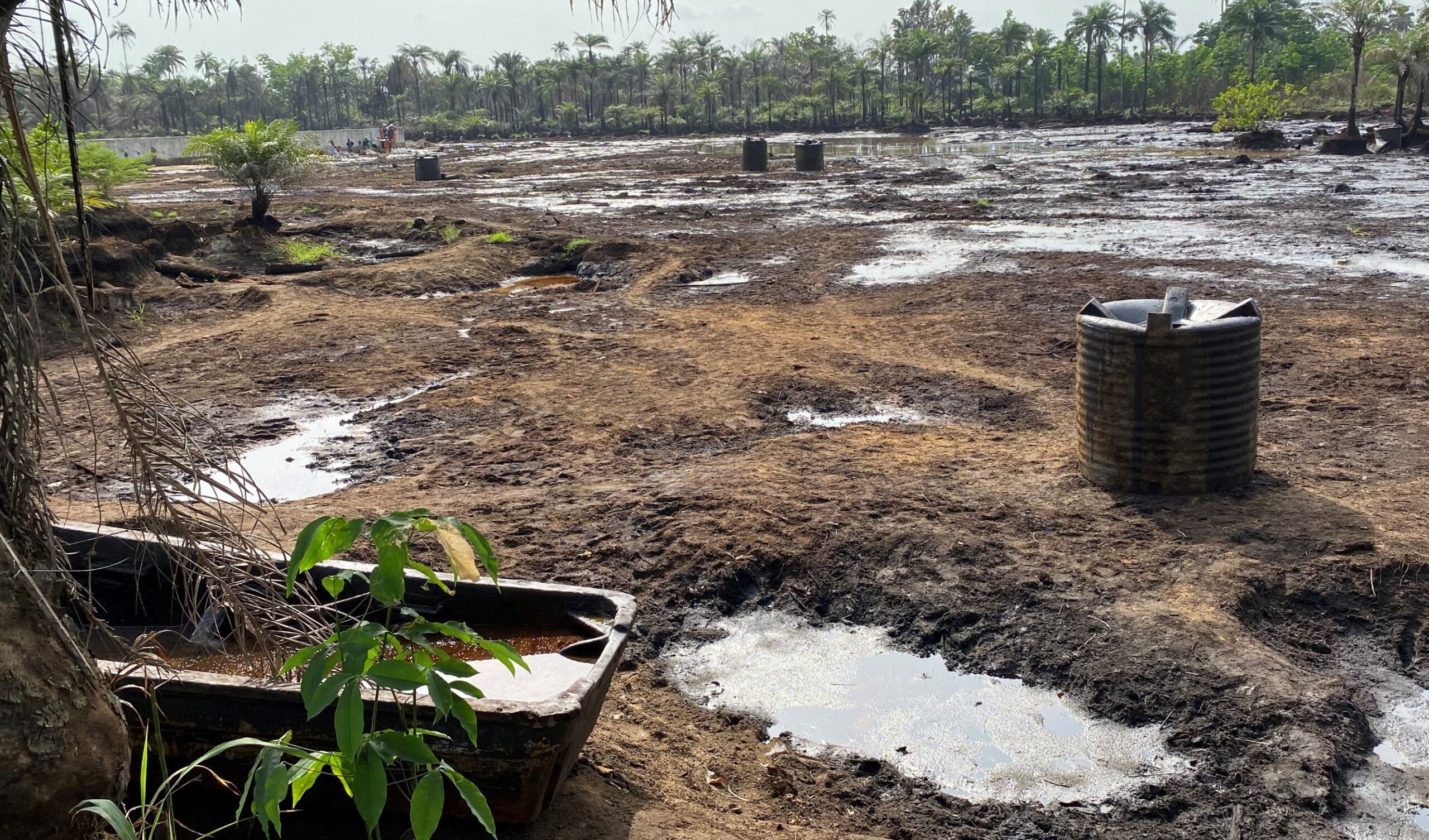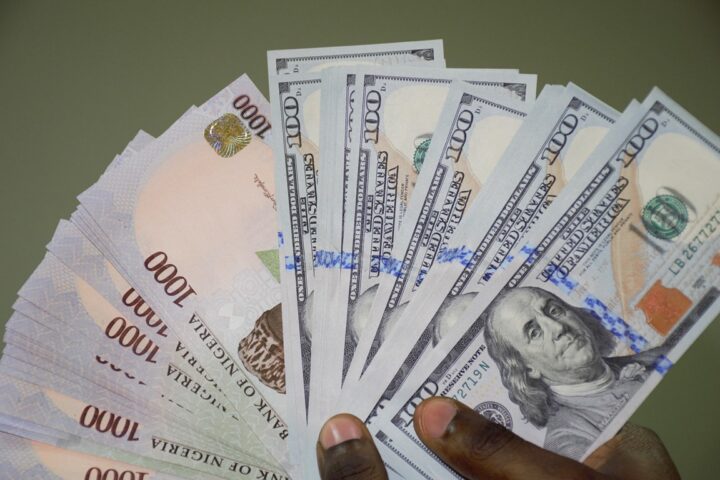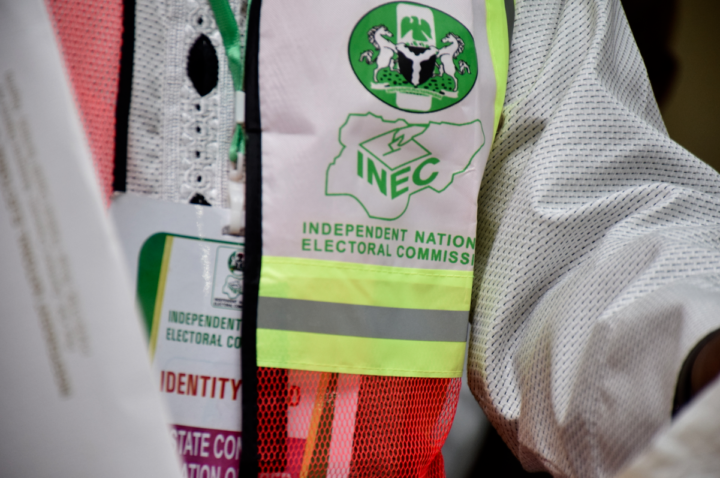BY GABRIEL OGUNJOBI
Rivers and Delta are two of the ten oil-producing states in the Niger Delta region. In many instances, oil exploration and the situation of the refineries have unleashed environmental catastrophe in the region. This investigation dug into the years-long unresolved injustice of oil spills within the communities at the fence lines of the nation’s oil merchandise, highlighting the endemic health impacts and economic sabotage.
THE AFFLICTED PEOPLE OF OGONI CLEAN-UP
Friday Kpeloi, sat quiet with his arms folded, as he listened to his two colleagues narrate how their land, water and atmosphere were contaminated by oil pollution. The two veteran activists of the Movement for the Survival of the Ogoni People (MOSOP) were Lazarus Tamana and Christian Lekova Kpandei. The movement’s pioneer, Kenule Beeson Saro-Wiwa, had been hanged with eight other activists in 1995 by Sani Abacha, then military ruler. They had sought justice for their people who suffered the consequences of crude oil mining on their land.
Advertisement
Described as one of the world’s worst environmental catastrophes, the Ogoni communities; Eleme, Gokana, Kana and Tia local government areas of Rivers state were overflooded in 1970 by oil following the corrosion of the Trans-Niger pipelines owned by the Shell Petroleum Development Corporation (SPDC). The clean-up of the 2010 Deepwater Horizon disaster caused by the same international oil giant has become a done deal but Ogoniland remains saturated in the sticky residue of oil. The aquatic habitat is still polluted, vegetation is dried up and human lives are strangled by the effects of this unending depletion.
Successive spills between 2008 and 2009 from defective Shell pipelines led to another massive contamination in Bodo. The Ogoni people accused Shell of late responses to the two instances, leaving the oil to pump into the creeks for over two months. While the legal battle instituted by a law firm, Leigh Day, against Shell before the High Court in London was still ongoing, the oil giant eventually agreed to a compensation package of £55 million for 15,600 Nigerian fishermen and the Bodo community. It was the first time compensation would be paid over an oil spill in Nigeria.

Kpeloi was apprised of the unfolding events in his homeland from the United States where he lived at the time: reading articles, including some written by Saro Wiwa himself, and phoning his kinsmen.
Advertisement
The news was not always pleasant. One particular triggering instance was when Saro Wiwa led the Ogoni people in a non-violent protest to demand clean-up of their indigenous land. They declared Shell persona non grata and banished them across Ogoniland. By 1995, nine of these activists were charged with incitement and sentenced to death by hanging.
The murder of the Ogoni nine ignited undying resolve to tackle the government and oil giants both home and abroad, ultimately garnering the interest of the United Nations as well for Ogoni clean-up. Indigenes abroad felt the urge to return home; Tamana, for example, returned from the UK and Kpeloi from the US, to become frontline fighters. “But I am not back home to finally settle,” Kpeloi told this reporter, insisting that he will return to the US whenever the struggle is over.
His hometown, Kegbara Dere, neighbouring Bodo, bears no sign of development, apart from the tarred road that leads to the oil manifold station. The locals are disconnected from the power grid because the transformer is non-functional. But this is the least of their problems. After the manifold station was blown up during the 1967 civil war, floods brought the still-flowing oil beyond the manifold spill area to farms, acres of mangroves, and the creeks that sustained most of the riverine area of Kegbara Dere.
When oil was spilt from Bodo pipelines — transporting crude through the sea into the edge of Bonny Island for offshore refining — their shared waterfront was contaminated. The creek water still clots with oil in some places till this very moment.
Advertisement
The two communities are like Siamese twins; same breath, same death. For more than six decades, the people of these two communities have been firsthand victims of the impacts of oil contamination.

When some indigenes of Bodo were compensated, Kegbara Dere was exempted and Kpeloi said he won’t give up on life until that happens. But aside from this activism, he also has become a victim of the story.
In late 2021, Kpeloi began to experience difficulty in breathing. “When the cough was getting severe, I decided to visit the hospital for a check-up in February,” says the activist, with a quaint English accent. He brought out a paper from his chest pocket, reading the doctor’s diagnosis: “Chronic obstructive pulmonary disease.”
As if to prove that he was struck with the illness in Nigeria, he tried to look for another piece of paper. The paper, that he later found, was a sheet from the 263-page report by the United Nations Environment Programme (UNEP) over Ogoniland pollution in 2011.
Advertisement
The report revealed that benzene, a known carcinogen, was detected in all air samples at concentrations ranging from 0.155 to 48.2 μg/m3. Approximately 10 per cent of detected benzene concentrations in Ogoniland were higher than the concentrations WHO and the United States Environmental Protection Agency (USEPA) report as corresponding to a 1 in 10,000 cancer risk. Many of the benzene concentrations detected in Ogoniland were higher than those being measured in more economically developed regions around the world.
In Kegbara Dere, for instance, there had been a series of spills from 1990 to 2009 at the Bomu manifold area owned by Shell. In April 2009, there was a fire following an oil spill on the Trans-Niger pipeline, which transports over 120,000 barrels per day through Ogoniland. Although Shell claimed to have completed two remediation projects in the Bomu manifold area in the past, most of the manifold area was still covered in oily residues, soot and ash.
Advertisement
UNEP’s findings corroborated that some 9,000 square metres of the manifold area are heavily polluted, the concentration of oil on the surface being above saturation, resulting in an oily sheen on pools of standing water and a strong oily smell.
The highest soil contaminations, at 63,600 mg/kg TPH, were found in the top 0.60 metres of a borehole in the most heavily contaminated area directly bordering the southernmost part of the manifold. This is extremely high and far above the Environmental Guidelines and Standards for the Petroleum Industry In Nigeria (EGASPIN) intervention value of 5,000 mg/kg.
Advertisement
The 70-year-old Kpeloi is not only nursing a terminal illness, he is bereaved; his younger brother died at the age of 68 of an undisclosed illness early this year. Yet, Kpeloi seemed optimistic about life and his fight for justice.
“There are cases that went on for seven, eight years before justice,” Kpeloi noted, before adding that their case was before the court in the Netherlands.
Advertisement
Aside from compensation in some quarters across Ogoniland, the agreement with the Shell companies included clean-up of all polluted areas. “But as far as I am concerned, clean-up has not started. What they are doing is crude and ridiculous,” Tamana declared.
In 2015, President Muhammadu Buhari announced a $1 billion restoration fund for the pilot clean-up project.
Christian Lekova Kpandei, a decoder with Amnesty International, is at the frontline of monitoring oil spills. He holds the oil corporations accountable for clean-up. In 2016, he had an experience that shook his conviction.
“While I was tracking the patterns of the spills in the creeks, the army arrested and detained me for two weeks,” he said. “Since then, I told myself there is no point dying for nothing while some people are in the cities enjoying the wealth. The striking questions are these: How do these people know where to burst? How do they transport the contents when the entire Ogoniland is militarised? They are aided by the military.”
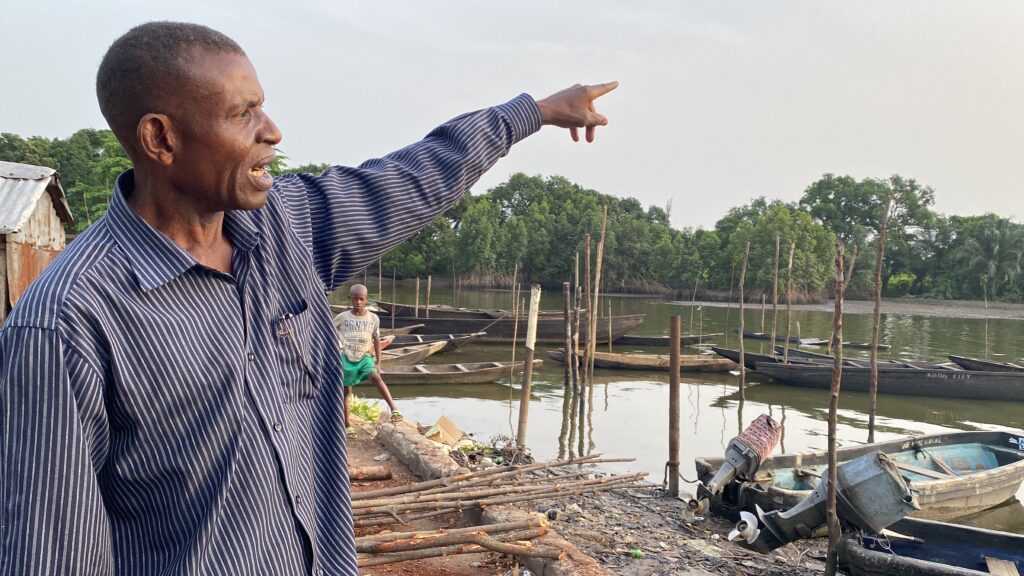
Christian benefited from the paltry N600,000 compensation, but the remaining part of the bargain, which was restoring their farmlands, remain a hard nut. The creek at Bodo is polluted by oil directly flowing into it, killing the mangroves where fishes used to lay their reproductive eggs and crabs take as shelter.
In January 2015, Shell admitted responsibility for the Bodo spills, pledging to compensate the people and clean up the creek. While Bodo residents have since received the compensation, clean-up is haphazardly done, this investigation can confirm. Apart from residents’ allegation that the contractors were using simple tools such as shovels to sandfill spill sites, satellite imagery views from 2006 till 2020 showed no signs of environmental restoration in Bodo.
The Geographic Information System (GIS) analyses showed that the coastal fringes of Bodo were still occupied by mangrove vegetation and appeared healthy, resembling a community of short water plants on the river surfaces as of 2006.
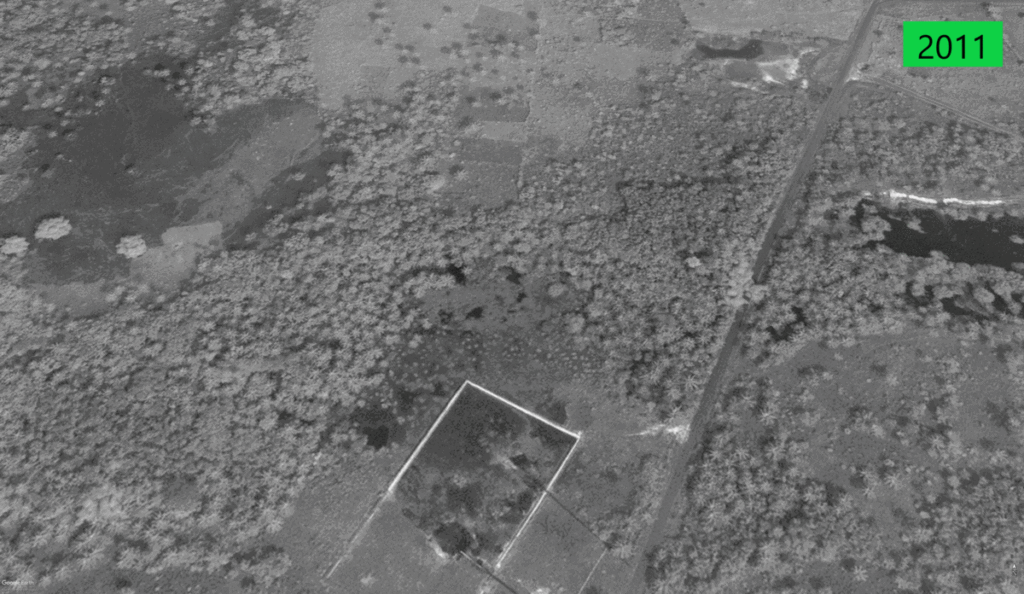
But the continued oil spill in the community disrupted this ecosystem. After the 2009 oil spill disaster in the area, the contaminants progressively weakened the integrity of the swamp vegetation. Bodo swamp in 2013 became less vegetative, losing its appearance of dense shrub-like assemblage. The combination of oil spills and the mangrove vegetation form a black, brown and green texture on the surfaces thereby compromising the health of the swap ecosystem.
By 2020, sparse plants and trees rising from dark coastal soil suggests that Bodo is still not completely rid of oil contaminants
Apart from Bodo and Kegbara Dere, this reporter confirmed that many other communities outside Ogoniland are still battling the ripples of oil contamination. For example, all the pipe-borne water plants in Bori, Khana LGA, were shut down because of the suspicion of contamination.
Not only that, the wide stretch of the riverine area near an old oilfield in Goi is soaked in oil, with earth crust sinking in the blackish abyss. The oil residue renders the entire land useless.
STILLBIRTH, SOOT IN RIVERS
Despite the controversy dogging Ogoniland clean-up, the environmental pollution in Rivers is worsened by illegal oil bunkering in the state. The consequence of this is illegal artisanal refining of the stolen oil, which in turn leads to the release of carbon black or ‘soot’ into the ecosystem. From one creek to the other, flares envelop many parts of the state which is about 60 per cent landmass and turn a bright morning day into an evening. The cloud is misty as if rain was imminent. When it does rain, even that water is not potable and often comes as acid rain.
In Port Harcourt especially, homes are rarely painted white these days because their walls are stained with soot. The windows in urban settlements of Rumuodara and Rumuokoro in the capital city are coated by deposits of soot and the nostrils of the dwellers release black fluids whenever they sneeze.
Pius Dukor, a socio-political commentator based in the state’s capital, recalled how he lost his voice for more than seven days after inhaling the thick soot. The choking smoke, he said, seized his breath but luckily spared his life in the end.
Regina is one of the victims of the soot problem. The mid-40-years–old woman, who hailed from Bodo, a 30-minute drive from Port Harcourt, recounted her stillbirth experience in 2013. She sells periwinkles for a living in the oil-rich state but because Bodo shores had become toxic for aquatic creatures, Regina would paddle a canoe far to Bonny to pick periwinkles where the water is relatively fresh.
Pregnant women like Regina were advised to keep off the shores to reduce the health risk to their babies. “But I was always going to the shores to pick periwinkles so I lost my baby,” she says. “I was feeling a sharp stomach pain that evening in 2013 and at the same time bleeding until I was rushed to the clinic.”
UN experts have opined that the environmental restoration of Ogoniland may take at least 25 years, adding that all sources of ongoing contamination, including artisanal refining, must be stopped before the clean-up of the creeks, and sediments and mangroves can begin.
Lately, Rivers state governor Nyesom Wike showed efforts to stop oil bunkering. He demanded a comprehensive list of illegal refineries and their operators across the 23 LGAs and also promised the disbursement of N20 million to each of the 23 local council chairmen ready to clamp down on the illegal refineries in their creeks.
OIL REFINING OR RENEWABLE ENERGY?
At various quarters, there are conversations that artisanal refining, though illegal, is bridging the gap in the demands of petroleum products. The government, on the other hand, is pushing for the establishment of modular refineries to halt illegal refineries, an alternative to keep the oil market afloat. But these two positions are half stories. From its inception, refining oil in Nigeria has come at great cost with the government losing billions of naira to rehabilitate ailing refineries that have had productivity for decades of existence. Also, oil production has far-reaching public health risks for the communities hosting the government-owned refineries or the pipelines.
For the first time in 43 years of operation, the NNPC published an audited financial report in 2020. In 2018 alone, the report revealed that the refineries incurred a total loss of N154 billion, with the Port Harcourt refineries alone losing N45.59 billion. But this huge loss was not even for rehabilitation but administrative maintenance including paying workers’ salaries.
In 2021 alone, the NNPC spent N100 billion on the rehabilitation of the nation’s four refineries, yet no success. The PHRC is made up of two refineries, located at Alesa Eleme near Port Harcourt with a jetty (for product import and export). The jetty is located 7.5km away from the refinery complex. In 1983, the Port Harcourt refinery with 60,000 barrels per stream day (bpsd). Subsequently, a new 150,000 bpsd export refinery was built in 1988 and commissioned in 1989. Both oil refineries possess a combined capacity of 210,000 barrels per day making PHRC the “biggest oil refining company in Nigeria.
At the PHRC’s current moribund status since 2019, the federal government has processed $98m and N17.2bn as partial payments for the ongoing rehabilitation of the Port Harcourt Refining Company which will cost a total of $1.559 billion at completion by the end of 2024. The Bureau of Public Enterprise initially commenced plans to privatize the four refineries, partly because Dangote’s incoming refinery with 650,000 bpsd capacity may drive the government out of the oil business. The plan was later jettisoned at the request of the NNPC around March 2021.
For the communities on the fencelines of these Port Harcourt refineries, their consequences are the spilt oil cloaking farmlands and killing their farm yields. The wastewaters from the PHRC are often not properly disposed of, ultimately contaminating residents’ source of drinking water. For instance, in the Ekerikana community where the Port Harcourt Refinery discharges effluents into their river, the people complain that the underground water emits an oil odour and becomes harmful when used domestically. It is not exactly different from the spill from the NNPC product pipeline that runs through Nisisioken Ogale in Eleme around 2005. The groundwater was found contaminated with benzene, a known carcinogen, and the presence of methyl tertiary butyl ether (MTBE). The benzene concentration was at levels over 900 times above the World Health Organization (WHO) standards. MTBE is not a part of crude oil but an additive added to refined products at the refinery. Its presence proved that the spill was not from crude oil but that of a refined product, for which the NNPC was directly responsible.
In Kegbara Dere too, there had been a rupture in the 24-inch NNPC Bonny to Port Harcourt Refinery trunk line which runs in a north-south direction transporting crude oil from Bonny Terminal to the Port Harcourt Refinery. The UNEP estimated that sediment in the creek was highly contaminated over an area of 20,000 square metres. The contamination in the immediate vicinity of the spill was never remediated, as suggested by the soil sampling results.
Instead of over-reliance on fossil fuel, Steve Trent, founder of the Environmental Justice Foundation, stressed the need to transition to renewable energy, which is environment-friendly.
According to him, “the average wind farm’s capacity is double that of what it was in 2016, and solar and wind now provide the cheapest source of new power for 67% of the world.
“Renewables are ready now and strong state investment in accelerating the pace of renewable roll-out and boosting energy efficiency can see us end the fossil fuel age for good. Decisive action on climate is not a ‘cost’: it is an investment, not just in our future, but in our survival. Such investment would represent the greatest cost-saving of human history.”
DELTA: A LOST HERITAGE
The Warri refinery is hosted in the sprawling neighbourhood of Ifiekporo and Ubeji communities. Its entrance is manned by the military conducting stop-over searches for vehicles entering any of the two communities on the fence line. For motorcycles and tricycles, they ride past gently. Within this refinery road, commuters give a furtive look at the pipelines of Nigeria’s commonwealth that transport its crude content from other parts of the state where it is being explored to the tank farm, which is another five kilometres away from the refinery. From the tank farm, international and local oil companies ferry the vessels on the Atlantic front in Delta offshore for refined oil.
Living on the fenceline of a refinery in Nigeria is characterized by one thing in Delta: an untamed rage gravitating towards militancy. Apart from the greenery along the same paths with pipelines, what oil-rich Warri represents needs no telling. There is crude everywhere; the nose perceives its smells seeping from the nooks and crannies as if the whole place would be in flames if there was any spark. There are traces of oil in the Ifiekporo creeks but it is difficult to trace the source on foot.
Where is the smell oozing from? Certainly, not from the tank farm. Whether or not the land was of tranquillity or militancy will manifest in a bit.
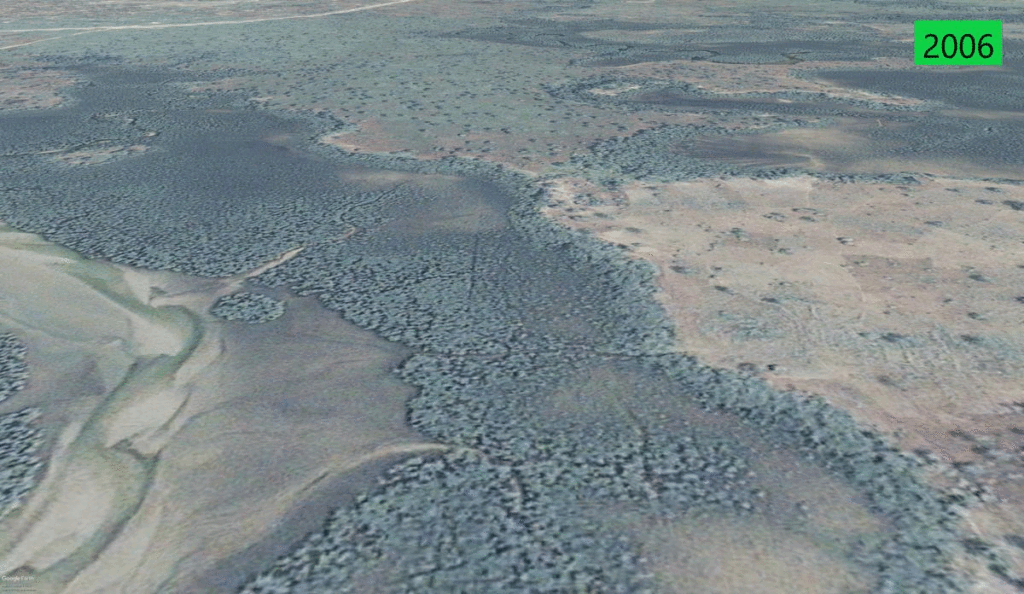
Flashback to the days of yore. Warri was the nerve of the state’s economy, dubbed the oil city. Its prominence in Nigeria’s south is only surpassed by Ogoni’s Rivers state, bearing the same natural resource but in larger quantities. The thing about Nigeria’s crude oil is that the moment it came, it overrode the nation’s existing priority. The country’s economy and the citizens are yet to recover from the effect; Nigeria tarnished agriculture, especially cocoa and palm oil farming, which was the economic mainstay for the new bride (crude oil).
Warri had attracted the fortune of oil multinationals, Shell Petroleum Development Company of Nigeria (SPDC), and the Warri Refinery and Petrochemical Company (WRPC), the youths flourished and the city was boisterous. Alas, a dangerous trend hit the oil city many years later.
Before noon on March 30, I arrived at the tank farm, still looking for the source of the oil smell. A friendly soldier ushered me to the sight of the berthed ships waiting for the vessels to be loaded. There was a tailback of tankers clogging the vicinity but the soldier tells me “the traffic is still subtle this time”.

According to him, the place was rowdier during the period many states were said to be frustrated by fuel scarcity between February and March. He mentioned that all that happened back then was hoarding fuel to hike prices, not scarcity.
As I moved a few miles out of the tank farm, I caught the sight of some teenagers and young adults breezing in and out of the creeks that led to the waters. Their bodies were dripping black oil. Behind the shelters where they came from on canoes with blue plastic barrels on canoes are swamps. Away from the waterside, they load the heavy barrels onto the truck beds.
Such bunkerers litter the creeks around the oil refinery and the tank farms. Some other times, they tap directly into pipelines away from oil company facilities and connect from the pipes to barges that are hidden in small creeks with mangrove forest cover. They pollute the water bodies while transporting stolen crude oil to the illegal refining sites where they ‘cook’ the oil and flare soot into the atmosphere in the process.
Soot is a threat to public health but no one in the community was willing to talk to me about the impacts of this oil theft.
Oil theft in Delta is an organized crime of sea pirates whose history hacks back to the Warri crisis of 1997 and 2003. First, a crisis over land ownership and supremacy erupted in 1997. Militia fighting site of a local government headquarters went on a five-year rampage that unhinged the city. By 2003, the gun-toting non-state actors and the Nigerian navy clashed over illegal oil bunkering. They use the waterways to transport arms into the country, intimidating oil workers on the sea and also hijacking their vessels.
This was how Delta deteriorated over the years through prolonged violence. Because of oil.
Oil multinationals such as Shell, Chevron, Nigeria National Petroleum Corporation, and its subsidiaries, and other ancillaries and servicing companies, now lay supine. And in the mid-2000s, they fled the city in droves. Shell initially downsized in the mid-2000s through SoFu (Securing our Future) initiatives, and later shut down its operation in Warri, a development that threw the state into turmoil. Oil production was severed because flow stations were attacked by non-state gunmen.
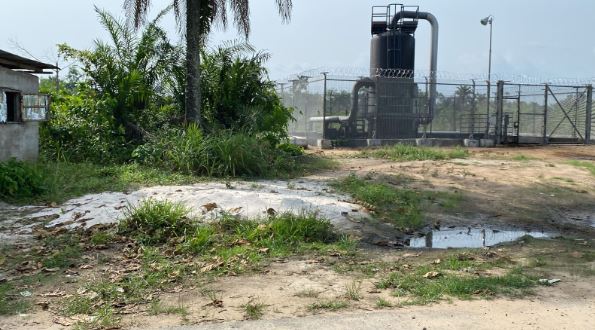
Chevron also closed its onshore facilities, and then its main export terminal at Escravos. Both Shell and Chevron declared force majeure-an inability to fulfil their obligations due to events beyond their control on Nigerian exports.
Human Rights Watch concluded that the Warri crisis was a classic example of a “resource war”, connected to the oil bunkering around the Escravos River and other oil fields.

For Delta, the joy of oil was short-lived. Oil activities shrank but the business of oil criminality grew rapidly and pollution exacerbated, owing to both unscrupulous activities of oil companies and oil theft such as I witnessed in Ifiekporo.
Nigeria’s oil production quota as approved by OPEC is pegged at about 1.8 million barrels per day but in the last few years, the country has struggled between 1.3 and 1.4 million barrels per day. Nigeria lost over $2bn to crude oil vandalism in 2020, according to the recent report by the Nigeria Extractive Industries Transparency Initiative.
Kelvin of Kokori was a product of the criminality that emerged post-oil era in Delta. Some indigenes believed the man originally Kelvin Oniarah was merely fighting the cause of his marginalized people until he was arrested in 2013 after he and his colleagues kidnapped prominent lawyer, Mike Ozekhome (SAN).
Aside from the militancy that heralded oil ventures in Delta, I know of another injustice done to the people of Kokori and economic sabotage of the nation. Kokori land is flat and situated in the evergreen tropical forest zone which is dominated by the oil palm tree. The community also has over twenty oil wells, the source of the second best crude oil in the world by reason of its low sulphur content. In 1994, Kokori alone generated N68 billion for the nation.
But this was a nightmare for farmers in the community because the crude oil boom spelt doom for palm oil.
There was a massive oil spill in 2018 at the Erhoike flow station of Kokori/Orogun oil bloc formerly under Shell’s OML 30.
“We now have to travel far to fish”, says a man visibly in his seventies who refused to have his name in the press.
But his complaint was what Kejekpo Omonade, Executive Director at Poverty Alleviation for the Poor Initiative (PAFPI), would later stress when revealed that oil spills “had been happening in Kokori for many years but this was most devastating”.
CAN THIS LAND RETURN TO THE GARDEN OF EDEN?

The spill came from the square-shaped flare wall, gushing into over four acres of land and killing ponds with the palm trees occupying spaces. The farmers were compensated for their loss while the oil company promised to restore the polluted land for continued farming. “Some people bought cars, some built houses from it,” says Omonade.
On the polluted farmland beside the flow station, four to five workers were seen scooping the oil from the earth’s crust. It was an extremely crude means done with simple tools like shovels and rakes.
One of them spoke to me, although anonymously. He revealed that the stage they had reached was “mopping” up. He assured me that: “we will complete the final stage of clean-up in a few days”.
My fixer jumped on the conversation to ask a question: “can this land return to the Garden of Eden? The worker answered in the affirmative but with a coy smile depicting uncertainty.
With the extent of the spill and deforested farmland yet on-ground, it will take a miracle for the expanse of land to be resuscitated in months and not a few days as the worker mentioned.
Due to the oil spill, the Kokori’s mangrove forests and trees have been systemically depleted over the years, a GIS investigation confirmed. As oil contaminants widened, the forest floor decreased by acres of plant and tree assemblage. As of 2011, the forest floor was occupied by rainforest trees. The first major change to the environment became apparent in 2017 when about 4 acres of land was deforested due to the spill. However, after a major spill in 2018, the deforested land extended to nearly 10 acres in 2022.
In Nigeria, environmental restoration following the oil spill has proven to be a hard nut to crack. Farmers have learnt from many experiences to put less hope on the possibilities. They rather look for used land elsewhere if they still wish to continue their farming. As it is in Ogoniland, four years since the last oil spill at Kokori, the farmland is not only barren but clean-up is sub-standard and ineffective.
NIGERIA’S DWINDLING PALM OIL LEGACY
Before crude oil exploration in the 1960s, palm oil – like other cash crops – was lucrative in Nigeria, being the world’s largest producer with a global market share of 43%. When the crude oil fever struck, Malaysia and Indonesia surpassed Nigeria as the world’s largest palm oil producers. From 1966, both countries combined produced approximately 80% of total global output. Today, Nigeria is the fifth largest palm oil producing country, with 1.5% or 1.03 million metric tonnes of the world’s total output, according to the United States Department of Agriculture (USDA).
According to PwC and the Central Bank of Nigeria (CBN), if Nigeria had remained the world’s largest exporter of palm oil, the country would be earning about $20 billion annually from cultivating and processing oil palm today.
Mysteriously, the Nigerian palm oil industry has always been dominated by small-scale farm holders, which account for over 80% of local production, while established plantations account for less than 20% of the total market.
Though the production dwindles, Nigeria remains the largest consumer of palm oil in Africa, hence an inevitable dependence on imports. To resolve this menace, the CBN tried to encourage local production and manage foreign reserves by restricting 41 items, including palm oil from forex through the Nigerian interbank market. A duty charge of 35% was also applied to crude palm oil (CPO).
Needless to say, the financial policy might have worked except for the counter-effects of oil spills in Kokori pushing the small-holder farmers out of business.
Many of the people who used to cultivate on the Kokori land before contamination migrated out of the village for city jobs to eke a living. Omonade himself resumed his soap and cosmetic factory business in a spacious flat on the periphery of Ughelli. By and large, Nigeria is losing the heritage of palm oil farming.
This report was funded under the Health of Mother Earth Foundation’s fossil politics programme.
